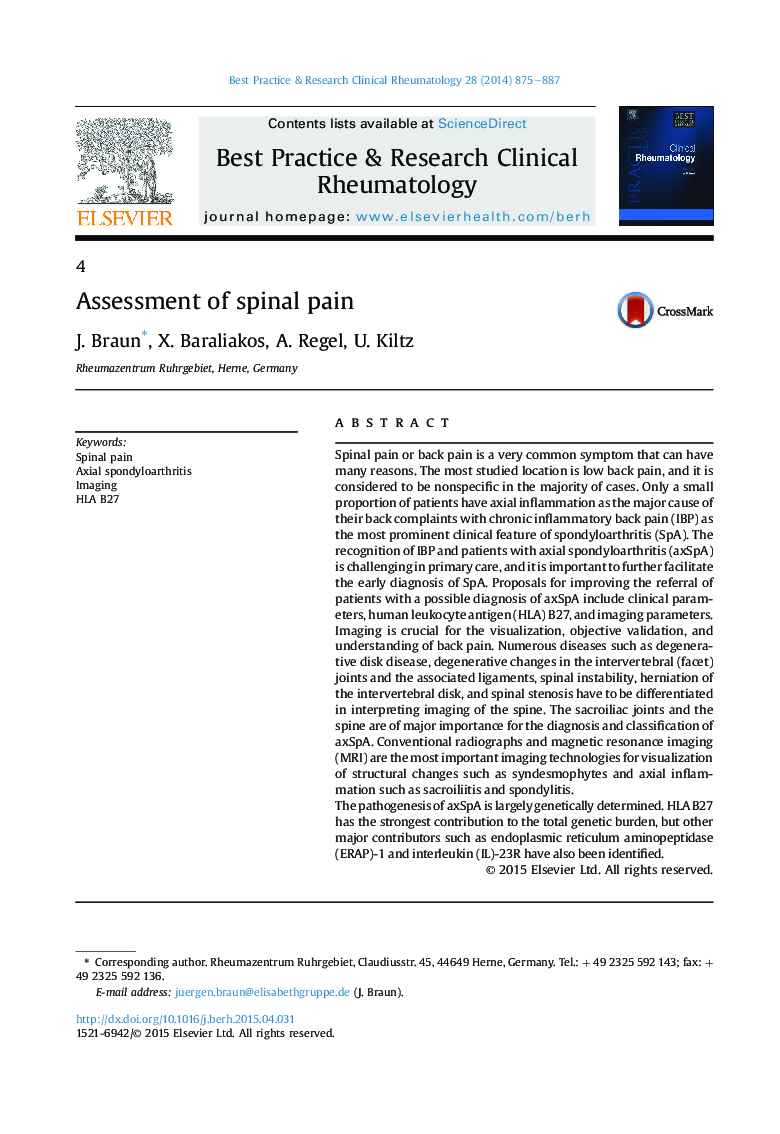| Article ID | Journal | Published Year | Pages | File Type |
|---|---|---|---|---|
| 3342843 | Best Practice & Research Clinical Rheumatology | 2014 | 13 Pages |
Spinal pain or back pain is a very common symptom that can have many reasons. The most studied location is low back pain, and it is considered to be nonspecific in the majority of cases. Only a small proportion of patients have axial inflammation as the major cause of their back complaints with chronic inflammatory back pain (IBP) as the most prominent clinical feature of spondyloarthritis (SpA). The recognition of IBP and patients with axial spondyloarthritis (axSpA) is challenging in primary care, and it is important to further facilitate the early diagnosis of SpA. Proposals for improving the referral of patients with a possible diagnosis of axSpA include clinical parameters, human leukocyte antigen (HLA) B27, and imaging parameters.Imaging is crucial for the visualization, objective validation, and understanding of back pain. Numerous diseases such as degenerative disk disease, degenerative changes in the intervertebral (facet) joints and the associated ligaments, spinal instability, herniation of the intervertebral disk, and spinal stenosis have to be differentiated in interpreting imaging of the spine. The sacroiliac joints and the spine are of major importance for the diagnosis and classification of axSpA. Conventional radiographs and magnetic resonance imaging (MRI) are the most important imaging technologies for visualization of structural changes such as syndesmophytes and axial inflammation such as sacroiliitis and spondylitis.The pathogenesis of axSpA is largely genetically determined. HLA B27 has the strongest contribution to the total genetic burden, but other major contributors such as endoplasmic reticulum aminopeptidase (ERAP)-1 and interleukin (IL)-23R have also been identified.
